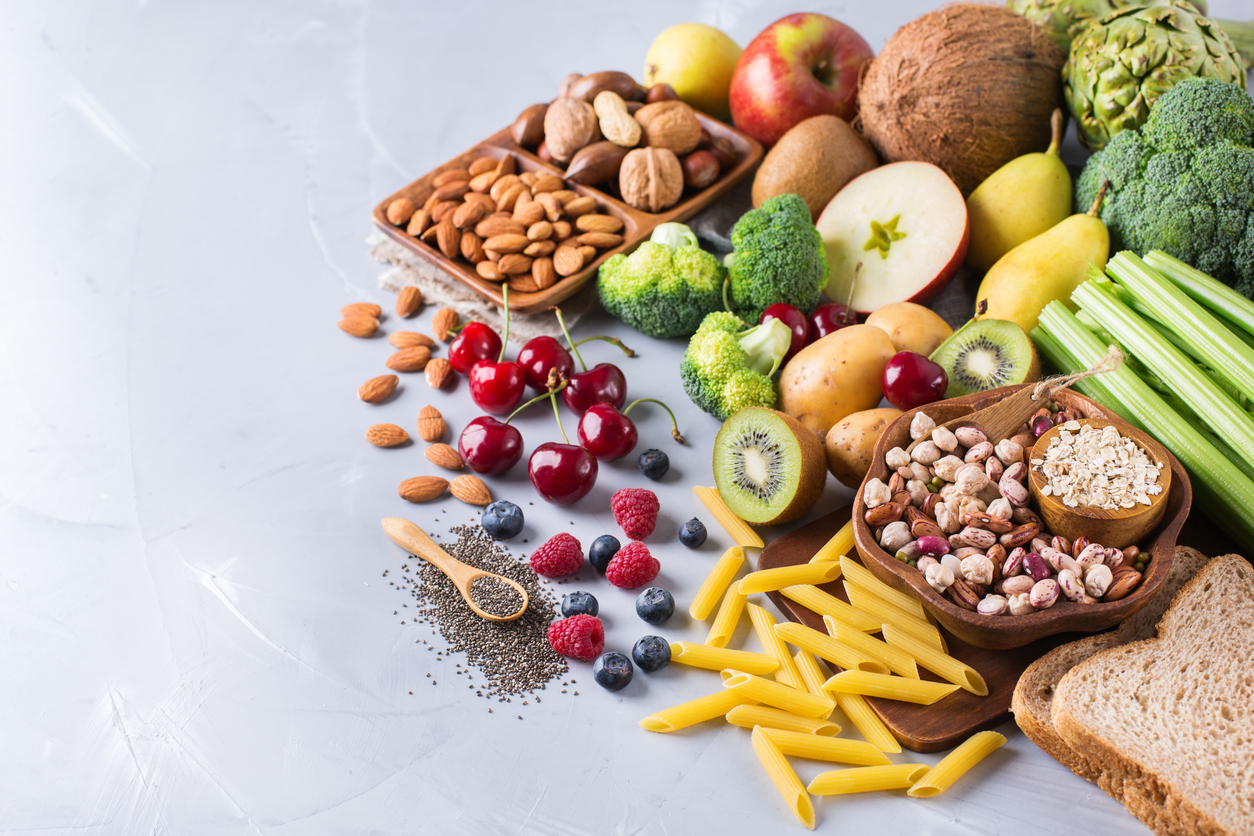
Eating healthy doesn’t have to break the bank. With careful planning and smart choices, you can maintain a nutritious diet while staying within your budget. By focusing on affordable, nutrient-dense foods, you can fuel your body with the essentials it needs without overspending. In this article, we’ll explore how to eat healthily on a budget and highlight some of the most affordable, nutritious foods you can incorporate into your diet.
1. Plan Your Meals in Advance
One of the most effective ways to save money on healthy food is by planning your meals ahead of time. Meal planning helps you avoid impulse buys and ensures you only purchase what you need for the week. It also allows you to take advantage of sales and discounts at your local grocery store.
How to meal plan on a budget:
- Create a weekly menu using affordable ingredients like grains, vegetables, and lean proteins.
- Make a grocery list based on your meal plan and stick to it.
- Plan meals that use similar ingredients to avoid food waste.
Pro tip:
- Check grocery store flyers and apps for weekly deals before planning your meals. This way, you can base your menu around discounted items.
2. Buy in Bulk
Buying in bulk is a great way to reduce costs on staple items that you use frequently, such as grains, legumes, and nuts. Many stores offer bulk sections where you can purchase just the amount you need, minimizing food waste and packaging. Bulk buying is particularly useful for dry goods that have a long shelf life.
Best foods to buy in bulk:
- Whole grains: Brown rice, quinoa, oats, and barley.
- Legumes: Dried beans, lentils, chickpeas, and peas.
- Nuts and seeds: Almonds, sunflower seeds, and flaxseeds.
Pro tip:
- Invest in airtight containers to store your bulk purchases, ensuring they stay fresh for longer.
3. Focus on Whole Foods
Whole foods, such as fruits, vegetables, grains, and lean proteins, are often more affordable and nutritious than processed foods. Processed foods tend to be more expensive due to added preservatives and packaging, while whole foods are nutrient-dense and more filling.
Affordable whole foods:
- Fresh vegetables: Carrots, cabbage, spinach, and potatoes are often low-cost and versatile.
- Fruits: Bananas, apples, oranges, and frozen berries.
- Proteins: Eggs, canned tuna, chicken thighs, and tofu.
Pro tip:
- Buy whole, unprocessed cuts of meat instead of pre-seasoned or pre-cut options. You can season and prepare them yourself at home for a fraction of the cost.
4. Choose Frozen and Canned Produce
Frozen and canned fruits and vegetables are just as nutritious as fresh ones, and they’re often more affordable. They also have a longer shelf life, making them a great option if you’re trying to reduce food waste. Look for frozen and canned produce without added sugars or salt to keep your meals healthy.
Benefits of frozen and canned produce:
- Frozen vegetables: Green beans, peas, broccoli, and mixed vegetables can be steamed, sautéed, or added to soups and stir-fries.
- Canned beans and tomatoes: These pantry staples are excellent for making soups, stews, and salads.
Pro tip:
- Drain and rinse canned vegetables and beans to reduce sodium content before cooking.
5. Cook at Home
Eating out or ordering takeout can quickly become expensive, especially if you’re trying to stick to healthy options. Cooking at home not only saves money but also allows you to control the ingredients in your meals. Homemade meals are generally healthier since you can limit added sugars, salts, and unhealthy fats.
Affordable homemade meal ideas:
- Vegetable stir-fry: Use frozen vegetables, tofu, and brown rice for a quick, budget-friendly meal.
- Lentil soup: Lentils are an inexpensive protein source, and they pair well with canned tomatoes, carrots, and onions.
- Egg and vegetable scramble: Eggs are a cost-effective protein, and you can add in leftover vegetables for a nutritious breakfast or dinner.
Pro tip:
- Batch cook on weekends and freeze portions of meals like soups, stews, and casseroles to have healthy options ready throughout the week.
6. Opt for In-Season Produce
Fruits and vegetables are often cheaper when they’re in season, as they’re more readily available and don’t require long-distance shipping. Buying in-season produce not only saves you money but also ensures you’re getting the freshest and most flavorful options.
Examples of in-season produce:
- Spring: Asparagus, strawberries, and peas.
- Summer: Tomatoes, zucchini, and peaches.
- Fall: Pumpkins, sweet potatoes, and apples.
- Winter: Kale, squash, and citrus fruits.
Pro tip:
- Visit your local farmers’ market to find affordable, in-season produce and support local farmers.
7. Make Your Own Snacks
Pre-packaged snacks are often pricey and can contain unhealthy ingredients. Instead, try making your own healthy snacks at home. Homemade snacks can be made in bulk and stored for future use, saving both time and money.
Homemade snack ideas:
- Trail mix: Combine bulk-bought nuts, seeds, and dried fruit for a quick, protein-packed snack.
- Popcorn: Air-popped popcorn is a low-cost, whole-grain snack. Season it with spices for added flavor.
- Energy bites: Mix oats, peanut butter, honey, and flaxseeds to create no-bake energy bites for a nutritious and budget-friendly snack.
Pro tip:
- Keep portioned snacks in reusable containers so they’re ready to grab when you need a quick bite.
8. Limit Food Waste
Reducing food waste is one of the simplest ways to save money on groceries. Many people buy more food than they can eat before it spoils, leading to unnecessary waste. By planning your meals carefully and using leftovers creatively, you can cut down on food waste and stretch your budget further.
Ways to reduce food waste:
- Use leftovers: Incorporate leftovers into your next meal, such as using cooked vegetables in a frittata or soup.
- Freeze extra food: Freeze perishable items, like bread, meat, and vegetables, if you’re not going to use them right away.
- Store food properly: Learn proper food storage techniques to keep produce, meat, and dairy fresh for longer.
Pro tip:
- Keep an “eat me first” section in your fridge for items that are close to expiring, and plan meals around them to avoid spoilage.
9. Grow Your Own Herbs and Vegetables
If you have the space, growing your own herbs and vegetables can be an excellent way to save money and ensure a fresh supply of produce. You don’t need a large garden—many herbs and vegetables can be grown in pots on a balcony or windowsill.
Easy-to-grow plants:
- Herbs: Basil, parsley, mint, and cilantro can thrive in small containers.
- Vegetables: Tomatoes, lettuce, and peppers are great options for small home gardens.
Pro tip:
- Start with easy-to-grow herbs like basil or mint, which require minimal care and can be used to enhance the flavor of various dishes.
10. Shop Sales and Use Coupons
Take advantage of sales, coupons, and discounts to lower your grocery bill. Many stores offer weekly deals on healthy staples like vegetables, grains, and lean meats. Coupon apps and websites can also help you find discounts on nutritious items.
How to save with coupons:
- Check grocery store apps for digital coupons on healthy foods.
- Clip paper coupons from weekly flyers for additional savings.
- Stock up on sale items like canned goods or frozen vegetables that have a long shelf life.
Pro tip:
- Be mindful of sales that promote processed or unhealthy foods. Stick to your grocery list to avoid impulse buys, even when using coupons.
Eating healthy on a budget is achievable with a little planning, smart shopping, and creative meal prep. By focusing on whole foods, buying in bulk, cooking at home, and reducing food waste, you can nourish your body without overspending. Incorporate these tips and affordable nutritious foods into your routine, and you’ll be on your way to maintaining a balanced, budget-friendly diet.







